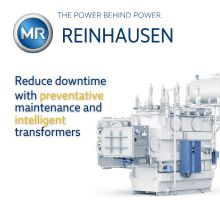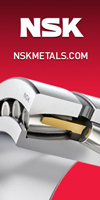Technology Roadmap Project Demonstrates Viability of New Ironmaking Process
08/28/2006 -
Under the leadership of Professor Donald R. Sadoway, in the Department of Materials Science Engineering, a team at the Massachusetts Institute of Technology (MIT) has successfully demonstrated the technical viability of producing iron by molten oxide electrolysis (MOE) in a laboratory scale cell.
|
The project is being conducted by MIT as part of the American Iron and Steel Institute (AISI)/Department of Energy (DOE) Technology Roadmap Program (TRP). AISI Vice President of Manufacturing and Technology Lawrence W. Kavanagh says that producing iron in the lab by MOE represents a significant stride and is a positive signal about the future of this technology.
“What sets molten oxide electrolysis apart from other metal producing technologies is that it is totally carbon-free and, hence, generates no CO2 gases—only oxygen,” said Kavanagh. “Over the last two decades, steelmakers have reduced energy utilization per ton by some 28%, and today’s processes are productive and green—but steelmakers need to and want to do more—and the development of transformational ironmaking technologies such as MOE will make similar achievements possible over the next two decades as well.”
Unlike other ironmaking processes, MOE works by passing an electric current through a liquid solution of iron oxide. The iron oxide then breaks down into liquid iron and oxygen gas, which allows oxygen to be the main by-product of the process.
MIT will continue further experiments to determine how to increase the rate of iron production and to discover new materials capable of extending the life of the electrodes to industrially practical limits. This work will set the stage for construction of a pilot scale cell to further validate the viability of the MOE process and identify scale-up parameters.
AISI serves as the voice of the North American steel industry in the public policy arena and advances the case for steel in the marketplace as the preferred material of choice. AISI also plays a lead role in the development and application of new steels and steelmaking technology. AISI is comprised of 33 member companies, including integrated and electric furnace steelmakers, and 118 associate and affiliate members who are suppliers to or customers of the steel industry.


.png?mediaprotectionhash=3750102d6e35cf158ae995d2a880e68af6bba8e3c74cb3bcacc2f4a4a71af45a&width=220&height=200&ext=.png)
-(1)-Reinhausen-(1).jpg?lang=en-US&ext=.jpg)




-Cutsforth.png?width=100&height=200&mediaprotectionhash=4482cb5f76125ba3348ab8851ab91d4ab118b35e517c017615489ff39c41f1af&ext=.png)